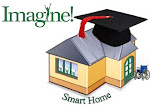If you are new to this (new) blog, you may be saying – this all sounds very cool, buy why are you building this thing anyway?
There are many reasons driving this goal of creating a new way of providing residential services:
Healthcare is becoming increasingly complex as people live longer.
Residential healthcare facilities, including facilities for people with developmental disabilities, are increasingly filling with older residents with more complex healthcare needs.
This problem is compounded by the fact that people are living longer. According to The State of the States in Developmental Disabilities: 2005, in 2004, approximately 2.8 million of the 4.6 million with mental retardation or other developmental disabilities in the U.S. were receiving support from family caregivers. The lifespan of persons with
 developmental disabilities in the 1970s was approximately 56 yrs, and in 1993 the lifespan was 66 years. Now, it is expected that, with the exception of those with the most severe disabilities, "those with developmental disabilities will have a lifespan typical of that of the general population. The increased lifespan has accounted for an estimated 10-20% increase in demand for residential services in the past 3 decades alone." Emerging residential technologies that will be utilized at the SmartHome can address projected demand for long-term care services and reduce the need for tens of thousands of additional staff.
developmental disabilities in the 1970s was approximately 56 yrs, and in 1993 the lifespan was 66 years. Now, it is expected that, with the exception of those with the most severe disabilities, "those with developmental disabilities will have a lifespan typical of that of the general population. The increased lifespan has accounted for an estimated 10-20% increase in demand for residential services in the past 3 decades alone." Emerging residential technologies that will be utilized at the SmartHome can address projected demand for long-term care services and reduce the need for tens of thousands of additional staff.Caregivers need more information.
This increase in the complexity of healthcare leads to an increase in a caregiver’s need for up-to-date, accurate and relevant information about the people they serve. This can create a huge burden on a caregiver’s time. The SmartHome will automate many of these tasks, providing caregivers with more time to do what they do best: take care of people.
Healthcare is costly.
In 2006, Americans spent $2.2 trillion on healthcare, 50% more than any country. Currently, 40% of the United States budget is spent on Medicaid, Medicare, and Social Security, and that number is expected to rise to 74% by 2030. Finding ways to provide improved healthcare services while simultaneously improving cost efficiency is imperative, and Imagine! is leading the way with the creation of its SmartHome.
Healthcare IT is critical.
It is estimated that 98,000 people die due to hospital errors each year. Imagine!’s SmartHome will use technology to improve the quality and effectiveness of services and simplify and increase medical surveillance to reduce medical errors.
It is about giving someone a better life.
All the reasons listed above are great. But ultimately, the SmartHome is designed to develop, use, and learn about technologies that can improve an individual’s (an individual who faces serious challenges due to a cognitive or developmental disability) quality of life. To give them a sense of independence they never had before. To give them the opportunity to embrace their community in a way all of us would like to.
Click here to see a short, moving video from the dedication of the Charles SmartHome to see the human face of what we are trying to do and why.



No comments:
Post a Comment